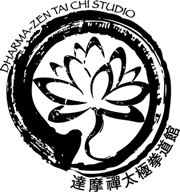In Buddhism there are many kinds of meditations. I think every religion also has their own way of doing meditation. I find that Meditation is also getting popular in North America because of the efforts of the Dalai Lama and other Buddhist monks.
Within Buddhism there are many different kinds of meditation. Some are easy and can be practiced at home by yourself. Some are of a high spiritual level where you need a good teacher to guide you and correct your errors. Regardless of the kind of meditation you are doing, whether Buddhist, Taoist or Yoga, when we talk about how to meditate, it always starts with how to breathe right. We all know breathing is essential and a necessity of life. But breathing also affects your psychological and subtler physiological processes.
When you are angry, nervous or afraid, your breath is fast and short. Your pulse speeds up too. If you are able to calm your breathing, taking deep and slow breaths, you can also slow your heart rate. People usually breath 14~18 breathes per minute. Research involving meditating monks, found when they breath 4~6 times a minute their pulse is also very slow. They also have greatly altered brain waves.
We believe that the history of meditation is several thousands years old. In India, before Sakyamuni Buddha, meditation already existed in Brahmanism. Brahmans believe that through meditation practice you can get mystical powers. Buddhism also believes meditation practice can cultivate mystical powers but the ultimate goal is to reach Satori (enlightenment). In China Taoist meditation practice started with Chi Kung meditation. Practitioners focus on their Chi (energy) encouraging it to flow through all the body’s meridians. They then focus on their spirit part hoping they can become immortal.
Now, when modern people do meditation I don’t think they want get mystical powers, achieve enlightenment or become immortal. Mostly just want to find a way to release the stress of living. But I find some people feel frustrated after they trying meditation because they can’t calm down their mind; they have too many thoughts. When some people see “Meditation” they automatically think “calm”, “peace” or “empty mind”. These preconceived notions interfere when they are doing meditation because they tell themselves they must have these feelings and when they don’t they feel frustrated.
In Buddhism, meditation means “Focus Observe”. This means that when you are doing meditation you try to focus on one thing (you can focus on your breath, one thought, a sound…etc.) then observe it. At the beginning you might have a lot of feelings from your body (itching, pain, heat…etc.) and a lot of thoughts in your mind but you still just observe them and don’t follow them. You don’t let your mind be distracted from your single focus. If you think your mind has too many thoughts you can try this: Your mind is just like the blue sky, your thought are like clouds. When a thought comes it’s just like a cloud. No matter if it’s a white cloud or a dark cloud, behind all clouds there is always the blue sky.
There are many places that teach meditation for free, like Vipassana Meditation centres, local meditation groups, Buddhist temples or even some Buddhist monasteries. You can go take a course there then go home and practice by your self. There are also some places that teach expensive meditation courses. You have to pay a lot of money to learn how to meditate! Usually I don’t like that. Meditation is not like buying a car, house…etc. When you buy things, paying more money usually means getting better quality. Meditation is different from buying an object. When you want to do meditation it means you want to find a way to release your mind and spirit. If you pay a lot of money to take a course you already expect to get something from the course so how can you release your mind and spirit?
Here is one easy way to do meditation: Do some warm-up or stretching first to relax your body. In Yoga meditation the stretching is very important because when your body is soft enough then the energy can go through your body.
Next rest your tongue tip on the ridge behind your upper teeth then breathe through your nose down your Dan-Tien with every breath. The Dan-Tien is here: 



The “Sea of Chi”, or “Chi Hai”, is usually 1.5 inches below your umbilicus/belly button for an average sized person.
You can find your Dantien this way. Place your hand flat against your belly. With fingers together, thumb up and fingers below, put your thumb directly over your umbilicus. The “Sea of Chi”, an acupuncture point, is directly beneath your ring finger. Place your other hand beneath the first hand. Your second hand is now over your Dantien. The Dantien is part of a larger area that includes the “Hinge at the Source” or “Guan Yuan”.
When you breath-in try taking a deep, fast breath. When you breath-out, exhale as slow as you can, focusing on your breath. You can sit on a seat cushion or on a chair. You can even stand but most importantly you want to keep your spine straight from neck to hip.
In the beginning you can try to meditate for 15~ 20 minutes at a time then gradually lengthen it. Sometimes you will feel good, sometimes you will have bad feelings but you just want to observe it and fixate on it. You need to persevere with your practice. When your breathing can slow to 4~6 times a minute you will find your mind and body feel different than before.
